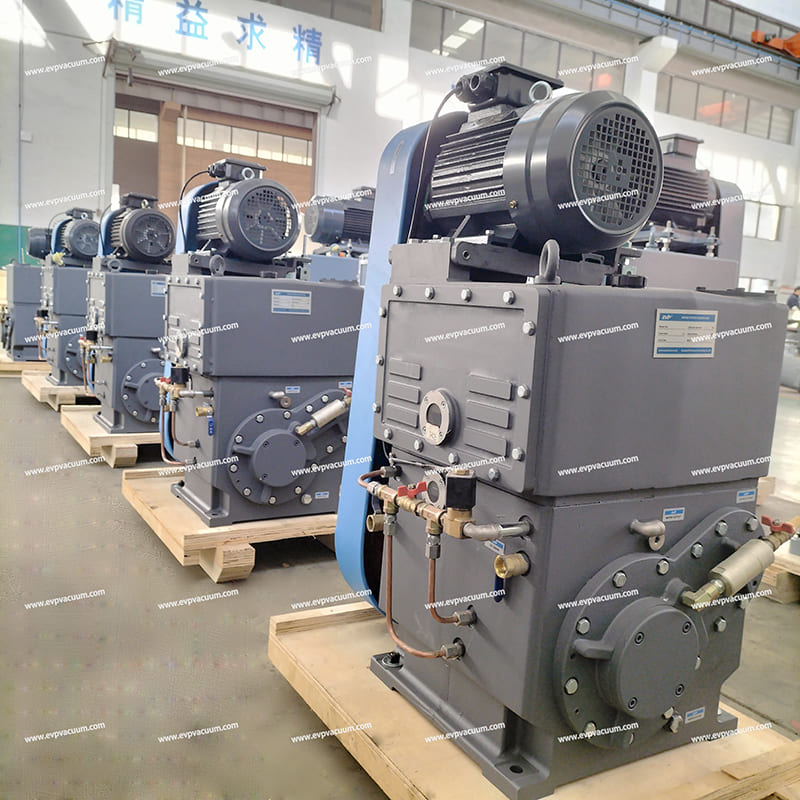Rotary Piston Vacuum Pumps
Optimization Strategies for Rotary Piston Vacuum Pumps: Enhancing Efficiency and Performance
Rotary piston vacuum pumps are widely used in industries such as pharmaceuticals, food processing, semiconductor manufacturing, and chemical processing due to their reliability and high vacuum capabilities. However, optimizing their performance can lead to significant energy savings, reduced maintenance costs, and extended operational life. This article explores key optimization strategies for rotary piston vacuum pumps.
1. Improving Energy Efficiency
Variable Speed Drives (VSDs)
Traditional fixed-speed vacuum pumps often operate at full capacity even when demand is low, leading to energy wastage.
Implementing Variable Speed Drives (VSDs) allows the pump to adjust its speed based on real-time vacuum requirements, reducing power consumption by up to 30-50%.
Optimal Motor Selection
High-efficiency IE3 or IE4 motors minimize energy losses.
Proper motor sizing ensures the pump operates near its best efficiency point (BEP), avoiding underloading or overloading.
2. Enhancing Lubrication and Cooling
High-Performance Lubricants
Using synthetic oils with superior thermal stability and oxidation resistance extends oil life and reduces friction.
Regular oil analysis helps detect contamination early, preventing wear.
Efficient Cooling Systems
Overheating reduces pump efficiency and lifespan.
Air or water-cooled heat exchangers maintain optimal operating temperatures.
Ensuring proper ventilation around the pump prevents heat buildup.
3. Reducing Internal Leakage
Wear Prevention and Clearance Optimization
Worn piston rings, seals, and valves increase internal leakage, reducing vacuum efficiency.
Regular inspection and replacement of worn components maintain tight clearances.
Precision machining of rotors and cylinders minimizes gas re-circulation.
Seal Upgrades
Upgrading to advanced sealing materials (e.g., PTFE or carbon seals) improves leak-tightness in high-vacuum applications.
4. Smart Monitoring and Predictive Maintenance
Vibration and Temperature Sensors
Continuous monitoring detects early signs of misalignment, bearing wear, or imbalance.
IoT-enabled sensors provide real-time data for predictive maintenance.
Automated Control Systems
Integrating PLC-based controls optimizes pump operation based on process demands.
Automated shutdown during idle periods prevents unnecessary wear.
5. Noise and Vibration Reduction
Excessive noise and vibration indicate mechanical issues.
Dynamic balancing of rotating components reduces vibration.
Acoustic enclosures lower noise pollution in sensitive environments.
6. Proper System Design and Integration
Optimal Pipework Layout
Minimizing pressure drops with short, wide piping and smooth bends improves efficiency.
Avoiding sharp bends and obstructions reduces flow resistance.
Gas Ballast Optimization
Adjusting the gas ballast valve helps handle condensable vapors without oil contamination.
Optimizing rotary piston vacuum pumps involves a combination of energy-efficient technologies, proactive maintenance, and smart monitoring. By implementing these strategies, industries can achieve:
Lower energy consumption
Extended pump lifespan
Reduced downtime and maintenance costs
Improved process reliability
Investing in these optimizations ensures that rotary piston vacuum pumps operate at peak performance, delivering long-term economic and operational benefits.
(The article comes from the Internet. If reprinting is not allowed, please contact our company to delete it.)

